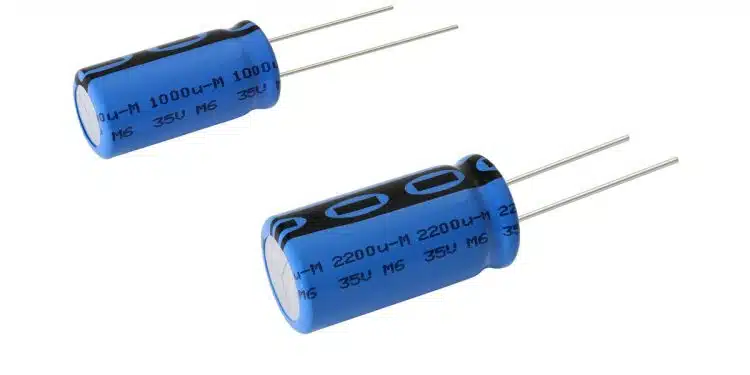Vishay Intertechnology, Inc. introduced a new series of low impedance, Automotive Grade miniature aluminum electrolytic capacitors that delivers higher performance in smaller case sizes than previous-generation solutions.
The Vishay BCcomponents 172 RLX series combines high ripple currents up to 4.9 A, high temperature operation to +105 °C, and very long useful life to 10 000 h in 14 case sizes ranging from 10 mm by 12 mm to 18 mm by 40 mm.
Compared to previous-generation solutions, the AEC-Q200 qualified capacitors released today offer lower impedance, higher capacitance for a given case size and voltage, and up to 54 % higher ripple current at the same capacitance-voltage (CV) rating in smaller case sizes. For example, while previous-generation solutions offer ripple current of 1100 mA at a CV rating of 1000 mF / 10 V in the 10 mm by 16 mm case size, the 172 RLX series delivers 1700 mA in the 10 mm by 12 mm case size. This allows designers to utilize fewer components, increasing design flexibility and saving board space.
Featuring radial leads and a cylindrical aluminum case with pressure relief, insulated with a blue sleeve, the 172 RLX series offers rated voltages up to 50 V, capacitance from 150 µF to 15 000 µF, and low impedance down to 0.011 W at +20 °C. The devices are charge- and discharge-proof.
As polarized aluminum electrolytic capacitors with a non-solid electrolyte, the RoHS-compliant devices are ideally suited for smoothing, filtering, and buffering in switch mode power supplies, DC/DC converters, motor drives, and control units for industrial, automotive, telecommunications, audio-video, and electronic data processing (EDP) applications.
FEATURES
- Very long useful life: 4000 h to 10 000 h at 105 °C, high stability, high reliability
- Very low impedance and low ESR in smaller case sizes than the 170 RVZ series
- Excellent ripple current capability
APPLICATIONS
- Power supplies (SMPS, DC/DC converters) for general industrial, EDP, audio‑video, automotive, and telecommunications
- Smoothing, filtering, buffering
Device Specification Table
| Series | 172 RLX |
| Case size (D x L in mm) | 10 x 12 to 18 x 40 |
| Capacitance range | 150 µF to 15 000 µF |
| Tolerance | ± 20 % |
| Rated voltage | 10 V to 50 V |
| Category temperature range | -40 °C to +105 °C |
| Useful life @ +105 °C | 4000 h to 10 000 h |
| Ripple current | 1280 mA to 4960 mA |
| Max. impedance at 100 kHz | 0.011 Ω to 0.073 Ω (@ +20 °C); 0.033 Ω to 0.220 Ω (@ -10 °C);1.7 Ω to 11.0 Ω (@ -40 °C) |
| Climatic category IEC 60068 | -40 / 105 / 56 |































